In-Depth Analysis of the PS4 VR Complete Set
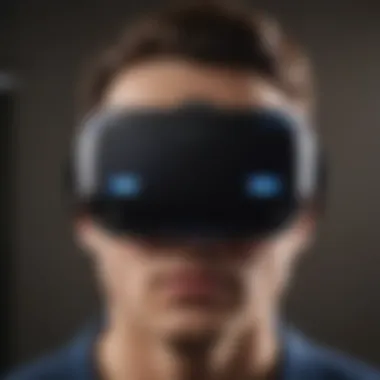
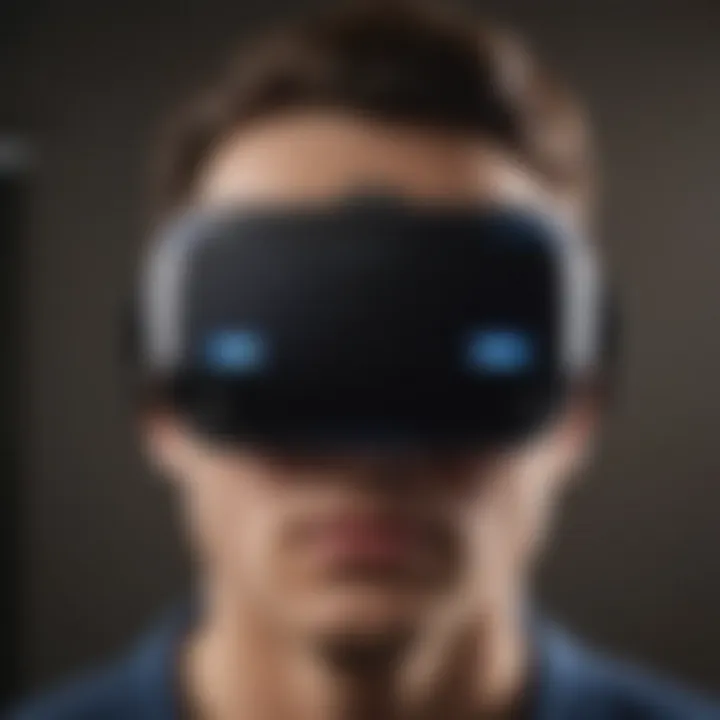
Overview
The advent of virtual reality has transformed the gaming experience, making it more immersive and engaging. One notable player in this sphere is the PS4 VR complete set. This analysis aims to dissect its elements, discuss its functionality, and evaluate its market significance—but what exactly does it bring to the table?
This system first came into focus in 2016, gaining attention for its approachable price point compared to other virtual reality systems on the market. Sony committed to enhancing the gaming experience through this product, which catered both to casual gamers and seasoned enthusiasts alike. As the technology evolves rapidly, understanding the PS4 VR set's impact on the virtual reality landscape is essential for informed consumer choices.
Features & Specifications
The PS4 VR complete set is engineered to deliver a rich and compelling virtual reality experience. Here’s a detailed breakdown of its primary components:
- PSVR Headset: The central piece of the system, offering a 1920 x 1080 resolution with a refresh rate of 120 Hz. Its OLED display ensures vibrant colors and deep blacks, enhancing realism.
- PlayStation Camera: This device captures the user's movements in the play area. It tracks the position of the headset and the PlayStation Move controllers with precision, ensuring seamless interaction with the virtual environment.
- PlayStation Move Controllers: These motion-sensing controllers allow for intuitive handling in games. They feature triggers and other buttons, further immersing the user into the experience.
- Demo Disc: A collection of games that comes with the system, showcasing its capabilities and allowing users to experience various genres right away.
The system demands a PlayStation 4 console or PlayStation 4 Pro, emphasizing its reliance on existing gaming infrastructure, which may either be an advantage or a limitation for new users.
Pros and Cons
When evaluating the PS4 VR complete set, several advantages and disadvantages emerge:
Pros:
- Affordable entry point compared to competitors like the Oculus Rift and HTC Vive.
- Solid library of exclusive games, making it appealing for PS4 owners.
- User-friendly setup and relatively lightweight headset.
- Good response time and tracking accuracy.
Cons:
- Lower resolution than some high-end VR alternatives, which may detract from the overall experience.
- Requires sufficient play space and a compatible PS4 console, limiting the potential user base.
- A moderate selection of peripherals can lead to higher overall investment than initially expected.
User Experience
User reviews often underscore the impact of the PS4 VR complete set on the gaming experience. Many users appreciate the immersive nature of gameplay. A common sentiment is the comfort of the headset during extended use. However, some users have noted that the resolution does not always meet their expectations, especially comparing it to newer models of VR equipment.
One user shared,
"I was blown away by how real some games felt, but I wished the picture clarity was better, especially in detailed environments."
Another emphasized its accessibility:
"For a PS4 owner, this is a must-try. The ease of setup and variety of games available is really worth it."
Buying Guide
Potential buyers of the PS4 VR set should consider several factors before making a purchase:
- Compatibility: Ensure you have a PlayStation 4 console on hand. The PSVR system works optimally with these models.
- Game Library: Look at the available titles and whether they cater to your gaming preferences. The VR library is steadily growing, but certain genres may be lacking.
- Budget: Be mindful of additional costs, including games and potential upgrades to the PlayStation system for optimal performance.
- Space Requirements: Assess your available space. VR experiences often require room to move, and cramped environments may hinder enjoyment.
While the PS4 VR complete set offers distinctive advantages, understanding your personal gaming habits and requirements is crucial for investment.
Prolusion to PS4 VR
The advent of virtual reality has transformed how we perceive and interact with digital environments. Exploring the PlayStation 4 VR system is crucial for understanding contemporary gaming and its potential influences on future technologies. This section delves into the vital elements that shaped the PS4 VR experience, including historical context, hardware capabilities, and the journey of virtual reality.
Historical Context of Virtual Reality
Virtual reality has roots tracing back to the mid-20th century, with early experiments paving the way for the immersive experiences we see today. The concept evolved over decades, driven by advancements in technology and the growing accessibility of electronic devices. By the time the PlayStation 4 VR emerged, virtual reality was gaining traction, yet it was still in its infancy. Early VR systems lacked the refinement and consumer accessibility needed for widespread adoption.
In the late 2010s, several companies began to prioritize VR development, recognizing its appeal. Innovations in graphics, motion tracking, and computing power laid a foundation for immersive gaming. As more consumers embraced gaming, the demand for VR experiences increased. The PS4 VR was introduced amidst a surge of interest in virtual reality, signifying a pivotal moment in gaming history.
Overview of the PlayStation
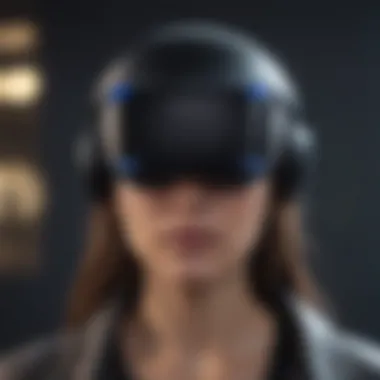
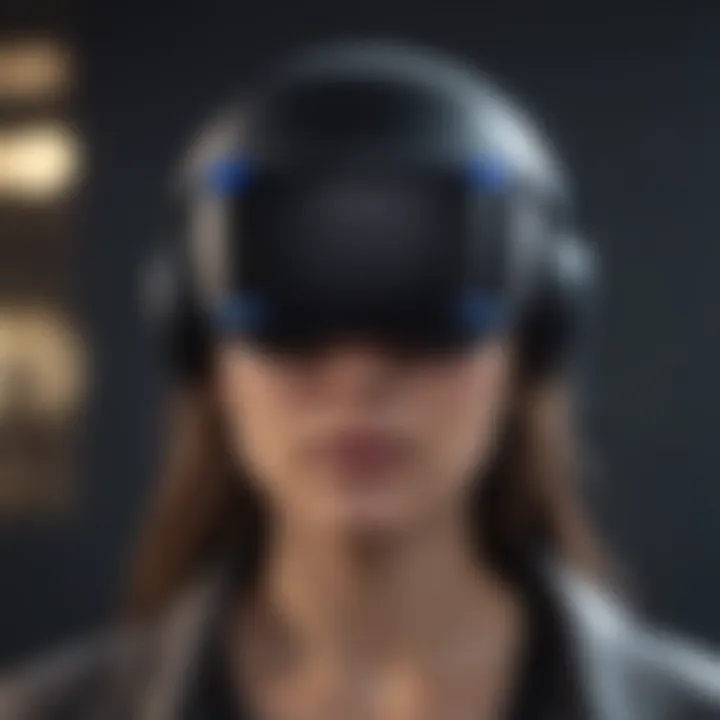
The PlayStation 4, developed by Sony Interactive Entertainment, has been a major player in the gaming industry since its release in 2013. With a robust library of games and powerful hardware, the PS4 captured substantial market attention. The system was designed to deliver high-quality graphics and seamless gameplay, establishing a benchmark for console performance. Its popularity created an environment conducive to the development of VR technologies.
The PS4's architecture supports extensive game development, allowing developers to create captivating virtual reality experiences. In addition, its online services, community engagement, and multimedia capabilities have made it a versatile system that appeals to a wide range of consumers. This success created an opportunity for Sony to expand into the virtual reality space with the PS4 VR.
Genesis of PS4 VR
The journey to create the PS4 VR started with a clear vision: to make virtual reality accessible and engaging for PlayStation users. Announced in 2014, the PS4 VR, originally titled Project Morpheus, aimed to provide immersive experiences that complement the gaming ecosystem. Several factors influenced its design, ranging from technological advancements to consumer feedback.
Upon its release in October 2016, the PS4 VR showcased innovative features, such as a 5.7-inch OLED display providing stunning visuals. The integration with the PS4 console was seamless, allowing gamers to switch between traditional gameplay and immersive VR experiences. Sony’s focus on user comfort and accessibility helped set the system apart in a competitive market.
"The PlayStation VR has not only brought virtual reality to the living room but also opened doors for developers and creators to explore new gaming frontiers."
Components of the PS4 VR Complete Set
The components of the PS4 VR complete set are vital to understanding its effectiveness and popularity. Each element plays a specific role in enhancing the gaming experience. Here we will detail the significance of the individual components, their benefits, and what one should consider when exploring each item.
Headset Specifications
The PS4 VR headset boasts impressive specifications that are critical to its performance. With a resolution of 1920 x 1080 pixels, it provides a clear visual experience. Each eye receives 1080p, which is crucial for depth perception. The OLED display offers vibrant colors and excellent contrast, making virtual environments feel immersive and detailed. The refresh rate of up to 120Hz helps minimize motion blur during fast-paced gaming, ensuring that players remain engaged without discomfort.
Another important feature is the 100-degree field of view, which expands the player's peripheral vision. It is significant for creating a more natural experience, allowing players to look around in virtual spaces effectively. The ergonomic design contributes to comfort during long gaming sessions, which is essential for user satisfaction.
Processor Unit Details
The processor unit of the PS4 VR is essential as it enhances the headset's capabilities. It handles the decoding of the high-quality audio and visual data before it reaches the headset. This unit also allows for social screen functionality, enabling viewers to see what the user is experiencing in VR.
This unit helps reduce latency issues, which can be frustrating in virtual reality. It ensures that the visuals and audio remain synchronized, thus enhancing immersion. Furthermore, the processor unit is responsible for upscaling games that do not natively support VR, allowing a broader range of titles to be enjoyed in virtual reality.
Camera and Tracking Technology
The PS4 VR relies heavily on cameras and tracking technology to deliver accurate motion tracking. The PlayStation Camera detects the position of the headset and the controllers. This technology ensures that movements are tracked precisely, aiding in the creation of a seamless virtual environment.
Utilizing a combination of infrared sensors and HD cameras, the tracking system maintains responsiveness as the player moves within a space. This setup provides a 360-degree tracking range, allowing users to look around and interact with the environment naturally. Such tracking capabilities are crucial for the realism and engagement levels often sought after in VR experiences.
Controllers Overview
The controllers included in the PS4 VR complete set, namely the PlayStation Move controllers and the DualShock 4, enhance interactivity. The PlayStation Move controllers offer motion sensing, which allows players to physically aim and perform actions in the game. Their design is user-friendly, fitting easily in hand and providing various buttons for interaction.
While the DualShock 4 is versatile, providing users with a conventional gaming controller option, it also supports enhanced features like touch pad gestures, light bar feedback, and motion sensors. This combination allows for diverse gameplay experiences, accommodating different types of games in the PS4 VR library.
Functionality and Performance
Understanding the functionality and performance of the PS4 VR complete set is crucial for grasping its effectiveness in delivering a compelling virtual reality experience. These aspects help consumers and tech enthusiasts appreciate what the device offers in terms of usability, visual quality, audio immersion, and control accuracy. Moreover, evaluating these features assists potential users in making informed purchasing decisions. It’s not just about having cutting-edge technology; it’s about how that technology translates into real-world enjoyment.
Setup Process
The setup process for the PS4 VR is designed to be straightforward but requires careful attention to detail. It involves connecting various components, including the processor unit, the headset, and the PlayStation camera. Start by plugging in the processor unit to the PS4. After that, connect the headset’s cables to the processor unit. The camera must be positioned at an appropriate height and angle for optimal tracking. Users must ensure that the play space is free of obstacles, as this enhances tracking accuracy.
Once everything is connected, the system guides users through configuration. This includes positioning the headset fits and adjusting the audio settings. A successful setup guarantees an immersive experience.
Visual and Audio Experience
The visual and audio experience of PS4 VR is impressive, but it varies among different titles. The headset offers a 1080p resolution across two screens, providing decent clarity for an immersive VR experience. Colors are vibrant, and the field of view is comfortable, which contributes to the sensation of presence in virtual environments. However, some users may note that more demanding titles could experience frame rate drops or less visual fidelity.
The audio system also plays a significant role. The headphones, which are often included, deliver high-quality sound that enhances immersion. Built-in 3D audio technology adds layers to gameplay experiences, allowing users to hear sound from all directions. Some titles utilize this to create a sense of space that is crucial for the realism in virtual settings.
Motion Tracking Capabilities
Motion tracking is central to the functionality of VR systems. The PS4 VR uses a combination of the PlayStation camera and built-in gyroscopes to track head and body movements. This creates a responsive experience where users can look around naturally in VR environments. The system supports positional tracking but has its limits. Fast movements or large play areas can disrupt tracking, which users should note. Ensuring a good play area and proper lighting can mitigate these issues.
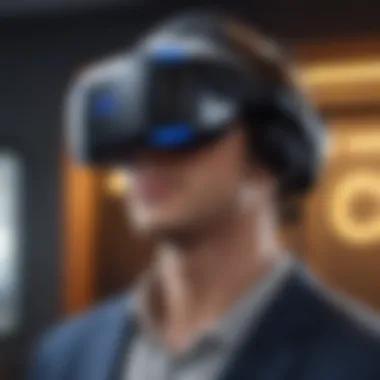
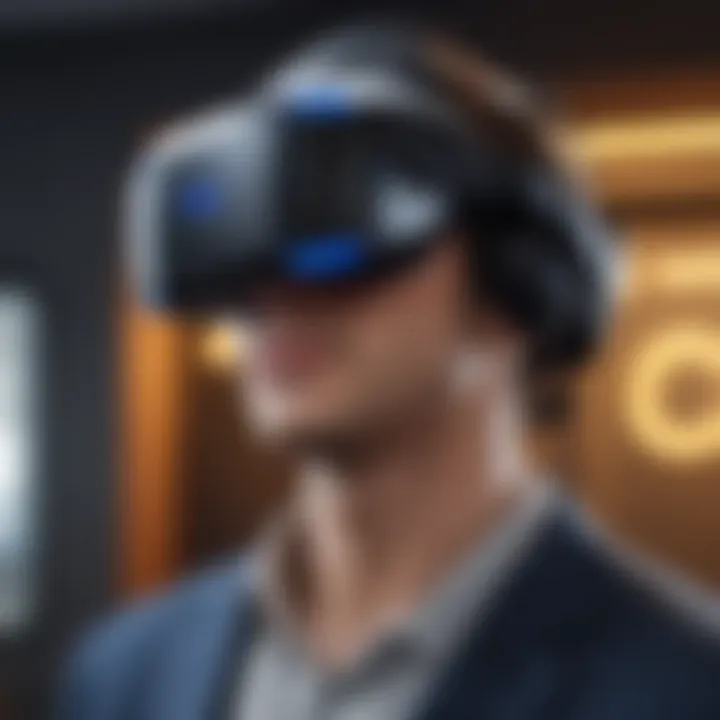
Input Methods and Controls
Input methods and controls are another area where the PS4 VR shines. Users primarily interact through the DualShock 4 controller, which provides a familiar interface. For a more immersive experience, the PlayStation Move controllers can also be used. These controllers offer motion tracking and allow for more intuitive interactions in games.
Different games implement controls uniquely, making some highly responsive while others may lag. Users should familiarize themselves with different control schemes, as mastering them considerably enhances enjoyment. Solid input methods contribute to overall performance, making it essential for any user to consider while exploring VR's potential.
Game Library and Software Compatibility
Game library and software compatibility plays a crucial role in the success and usability of the PS4 VR complete set. When users invest in a virtual reality system, they desire access to a broad selection of games and applications. The diversity in gaming content significantly impacts user experience and overall satisfaction, making it essential to assess this aspect thoroughly.
Notable Titles Supporting PS4 VR
Several standout titles gained recognition for their immersive gameplay in the PS4 VR environment. Games such as Beat Saber, Astro Bot Rescue Mission, and Blood & Truth demonstrate the depth and engagement possible with this technology.
- Beat Saber: This rhythm game combines music and lightsaber mechanics, making it a popular choice among VR users. It provides an entertaining workout while enhancing coordination skills.
- Astro Bot Rescue Mission: This platformer utilizes VR to create a unique experience. Players navigate a vibrant world to rescue lost bots, merging classic gameplay with innovative VR mechanics.
- Blood & Truth: A first-person shooter offering cinematic storytelling within a virtual environment. Its action sequences and interactivity distinguish it within the PS4 VR catalog.
These titles highlight how thoughtful VR design can leverage the hardware capabilities of the PS4 VR system, ensuring engaging and enjoyable experiences.
Third-Party Software Integrations
Significant value comes from third-party software in expanding the PS4 VR ecosystem. Various developers have embraced the platform, presenting an array of applications beyond gaming. Popular examples include Rec Room and VRChat, which allow users to engage socially in immersive environments.
- Rec Room: This social VR space offers games, quests, and customization, emphasizing community interaction.
- VRChat: Known for its user-generated content and social features, VRChat provides a broad platform for creativity and connection among users.
Integrations like these demonstrate the versatility of the PS4 VR complete set, showcasing potential beyond traditional gaming while enhancing community experience.
Future Game Developments
The future of game development for the PS4 VR system is promising, with various studios exploring innovative ways to utilize VR technology. Upcoming titles in the pipeline are expected to build upon established franchises and introduce new experiences. Developers are increasingly interested in leveraging capabilities such as hand tracking and improved graphics to enhance realism.
Considerations for upcoming games include:
- Immersive Storytelling: Future projects aim for deep narrative experiences that utilize VR features to draw users into the story.
- Enhanced Interactivity: Developers are likely to focus on refining user interactions, promoting more natural movements and decision-making within games.
- Cross-Platform Play: As VR technology becomes more prevalent, there is potential for cross-platform capabilities that encourage more extensive community engagement.
The growth trajectory of VR game development signals a vibrant future. This evolution could lead to further innovations that redefine how users connect with gaming content and each other.
User Experience
User experience is a pivotal aspect of the PS4 VR complete set. It encompasses how users interact with the system, their level of comfort, and the overall satisfaction derived from the virtual reality experience. A strong user experience can make or break the appeal of VR technology. It ensures that both novice and experienced users can navigate and engage seamlessly with the virtual environment. This section analyzes critical elements of usability, comfort, immersion, and user feedback.
Usability and Comfort
Usability refers to how easily users can operate the PS4 VR system. A clear interface and intuitive controls are essential for smooth navigation. The setup process should be straightforward, allowing users to quickly immerse themselves in the virtual world. Comfort is equally vital, as prolonged use of headsets can lead to fatigue or discomfort. The PS4 VR headset features adjustable straps and a lightweight design aimed at minimizing strain during extended sessions.
Key factors to consider include:
- Weight Distribution: Proper weight balance reduces pressure on the user's face and neck.
- Adjustable Fit: Users should customize headsets for comfort. Adjusting the straps and lenses aligns with individual preferences.
- Breathable Materials: The choice of materials influences comfort. Soft and breathable fabrics enhance the overall experience.
Immersion and Engagement Factors
Immersion transcends mere functionality. It involves creating a sense of ‘being there’ in the virtual experience. The PS4 VR uses advanced tracking technology to translate physical movements into digital responses. This responsiveness enhances engagement, as users can physically interact with their environment.
Several factors contribute to immersion:
- Visual Fidelity: The display quality impacts the realism of the virtual world. Higher resolution and wider field of view amplify engagement.
- Sound Design: Quality audio reinforces the experience, making environments feel more authentic. Spatial audio adds depth and realism.
- Interactive Elements: The ability to interact with the virtual space promotes exploration and engagement. Users feel more invested in gameplay.
User Feedback and Satisfaction
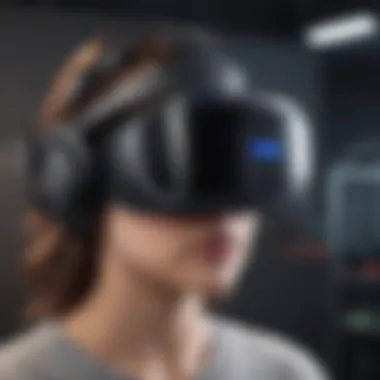
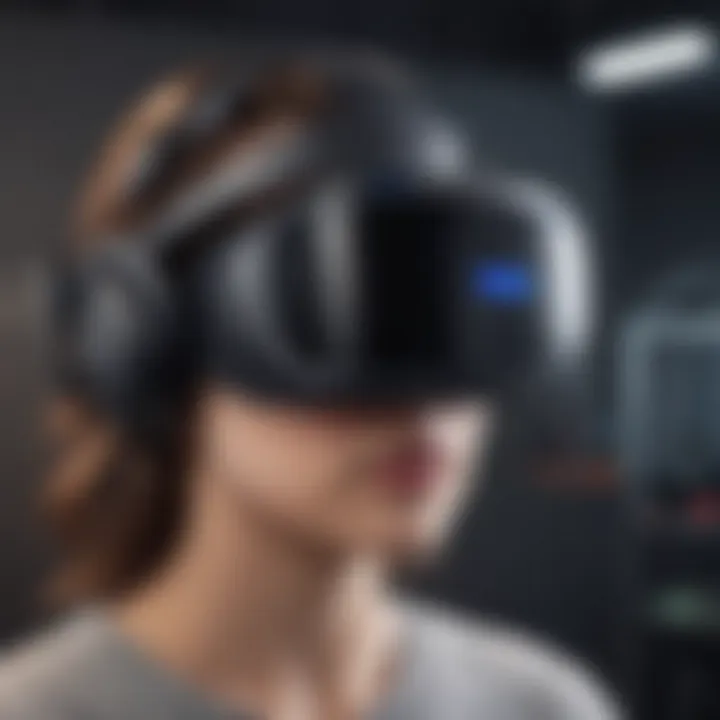
User feedback provides valuable insights into the experience. Analyzing reviews and ratings helps understand what works and what doesn’t. High levels of user satisfaction often correlate with positive feedback on VR experiences. Users generally appreciate features such as:
- Intuitive Controls: Easy-to-use controls enhance positive interaction. Complex systems can overwhelm users.
- Variety of Games: A diverse library encourages prolonged use and exploration of different genres.
- Community Support: Active engagement with other users through forums on Reddit or Facebook enhances the overall experience.
Overall, information shared from users on platforms like Reddit and feedback on social media contributes to better understanding of the PS4 VR system.
"User experience is not about being right or wrong; it’s about how users connect with the technology."
In summary, the user experience of the PS4 VR complete set is fundamental to its success in the market. By addressing usability, enhancing comfort, promoting immersion, and valuing user feedback, the system can maintain its relevance and satisfaction among tech enthusiasts.
Market Analysis
Market analysis is a critical component in understanding the impact and performance of the PS4 VR complete set. It allows consumers and industry observers to gauge not just the standing of the PS4 VR system in a rapidly evolving landscape, but also its potential for future growth. By examining various aspects, such as sales performance and comparison with competitors, we can gain valuable insights into consumer preferences and technological advancements.
Sales Performance Overview
The sales performance of the PS4 VR system provides vital indicators of its popularity and market viability. Since its launch, this virtual reality headset has witnessed fluctuations in its sales, influenced by several factors.
- Initial Reception: The first year of sales saw impressive uptake. Many gamers were attracted to the novelty of VR, resulting in strong initial sales numbers.
- Yearly Trends: Over the years, sales data reveals certain trends, often correlating with major game releases or promotional events. Increased sales are notably linked to holiday seasons and bundles that include core titles like "Astro Bot Rescue Mission" and "Moss".
- Overall Performance: It is essential to compare sales figures against overall PlayStation 4 console sales. Such a comparison showcases how well the PS4 VR integrates into the larger ecosystem.
Comparative Analysis with Competitors
In analyzing the market presence of PS4 VR, one must evaluate its standing against competitors like the Oculus Rift and HTC Vive. Each of these systems offers unique features and performance capabilities.
- Oculus Rift: Known for its strong library of exclusive titles, Oculus Rift often attracts a different segment of gamers focused on PC-based VR experiences. Pricing and hardware requirements also play a crucial role in its market position.
- HTC Vive: The HTC Vive offers advanced tracking technology but comes at a higher price point. While its specifications might cater to a niche audience demanding premium experiences, it has yet to capture a broader market segment compared to PS4 VR.
- Price Points: PS4 VR's affordability relative to its competitors makes it an accessible option for mainstream consumers. This can be a decisive factor in attracting a wider audience, particularly casual gamers.
Such comparative insights help in evaluating the PS4 VR's competitive edge and the areas where it might improve. Understanding the market dynamics enables consumers to make informed decisions about investing in virtual reality technology, aligning choices with preferences and budgets.
Technological Advancements and Future Outlook
The realm of virtual reality is evolving at an unprecedented pace. Technological advancements are reshaping how players interact with virtual environments, making the study of these innovations essential for understanding the future of VR gaming. As we look at the PS4 VR complete set, examining its implications provides insights into both current and future trends in the gaming sector.
Upcoming Innovations in VR Technology
The landscape of VR technology is going through significant changes. With each generation of hardware, improvements become evident. Some of the notable upcoming innovations include:
- Improved Resolution and Refresh Rates: Enhanced visuals are critical. The next wave of VR headsets promises higher resolution displays and smoother refresh rates. This can create an immersive experience that reduces motion sickness and enhances overall enjoyment.
- Wireless Technology: One key limitation has been the wires connecting headsets to consoles. Wireless VR is on the horizon, allowing players to move freely without the constraints of cables. This will likely improve user experience and increase the level of engagement with the virtual world.
- Advanced Motion Tracking: Future VR systems are expected to feature better motion tracking capabilities. This includes improved facial recognition and gesture tracking, allowing for a more natural interaction. The potential applications extend beyond gaming, impacting fields like education and healthcare as well.
- Artificial Intelligence Integration: AI can help create more adaptive and responsive environments. This could lead to personalized gaming experiences, where the game reacts intelligently to player actions and preferences.
These innovations not only enhance user experiences but also pave the way for new genres of gaming that rely on immersive environments.
Implications for the Gaming Industry
As these advances roll out, they will have significant implications for the gaming industry. Here are a few key considerations:
- Market Expansion: Improved technology could attract a larger audience. As VR becomes more accessible and user-friendly, more players may engage with this medium, leading to increased sales and market growth.
- Creative Development Opportunities: Game developers may have more tools at their disposal for creating unique experiences. New platforms can encourage innovative storytelling techniques, transforming gameplay mechanics, and creating richer narratives.
- Competitive Landscape: Enhanced VR capabilities will compel console makers like Sony, Microsoft, and others to innovate rapidly. They must ensure their systems remain relevant and appealing in a competitive market. Players may benefit as companies strive to outdo each other with advanced features and better pricing.
- Potential for Non-Gaming Applications: Beyond the gaming industry, advancements in VR technology could be utilized in several sectors, including training simulations in healthcare and environment, marketing strategies, and virtual tourism. This diversification represents a significant opportunity for growth beyond traditional gaming.
"The future of VR technology holds immense potential that goes beyond entertainment, impacting various fields of work and everyday life."
As we consider the future of the PS4 VR complete set within this evolving context, the next steps will be crucial for both players and developers. Understanding these technological trends will guide consumers and innovators alike, ensuring informed choices in a rapidly changing landscape.
Epilogue
The conclusion serves as a pivotal part of this article, tying together the multifaceted aspects of the PS4 VR complete set into a cohesive overview. It emphasizes not only the significance of the hardware and software involved, but also the broader impact on consumers and the gaming industry. In an era where virtual reality is continuously evolving, understanding the merits and limitations of such systems is essential for tech enthusiasts and casual gamers alike.
Summary of Key Points
Throughout this analysis, several critical points have emerged:
- Components Diversity: The PS4 VR complete set includes a headset, processor unit, camera, and various controllers. Each plays a crucial role in delivering a comprehensive VR experience.
- User Experience: Usability, comfort, and engagement factor significantly influence how users interact with VR technology. Positive feedback highlights this system’s capability to immerse players in a virtual environment effectively.
- Market Position: The PS4 VR has showcased robust sales performance compared to its competitors, signaling a strong consumer interest and acceptance of VR technology within the gaming realm.
- Future of VR: This conclusion also examines anticipated innovations in VR and the implications for the gaming industry, hinting at the readiness for further developments and investments in this area.
Final Thoughts on PS4 VR
The PS4 VR complete set stands not only as a testament to the progress made in virtual reality but also as a benchmark for future advancements in the gaming sphere. As technology increases in sophistication, users can look forward to more immersive and engaging experiences. The system has provided a gateway for many to explore virtual worlds, establish emotional connections within games, and experience stories in a way that traditional gaming has not achieved.
"VR is not just a new platform; it's a new canvas for creativity and storytelling in gaming."
The conclusion thus emphasizes that PS4 VR is more than just a technological product; it is a significant step toward democratizing access to virtual worlds for a larger audience. As developers continue to push boundaries, the potential for VR to become a commonplace tool in gaming is undeniable. For informed decisions regarding VR engagement, understanding these elements is essential.







